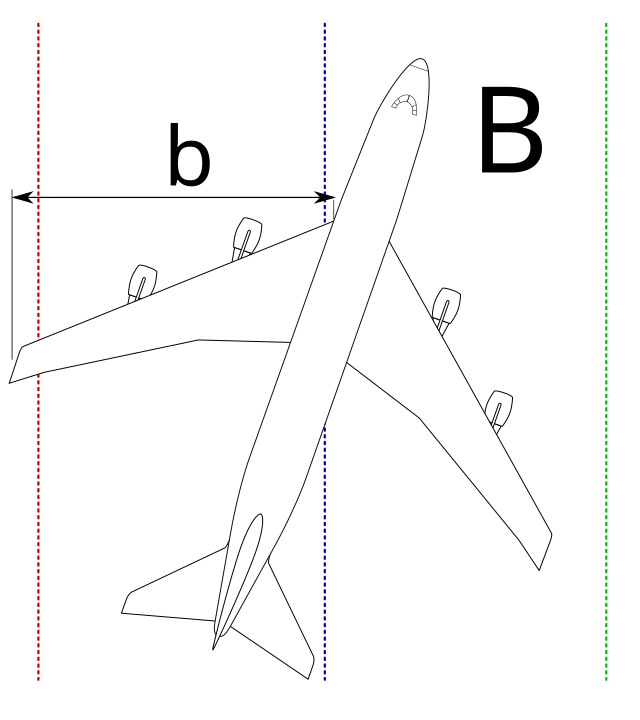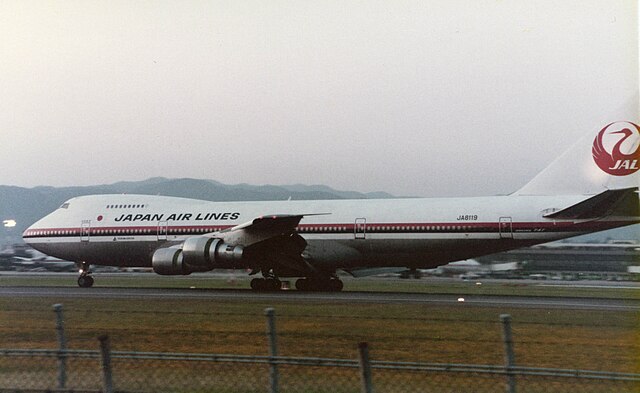
Dutch roll, an oscillatory motion experienced by aircraft during flight, combines the side-to-side nose movement known as yaw with the wing rocking motion of roll. The aircraft’s strong lateral stability causes this phenomenon, while its weak directional stability allows for yawing. However, this motion is more than just a technicality. It’s a significant challenge for pilots, often causing discomfort and significantly affecting the aircraft’s performance. The Dutch Roll is a unique phenomenon that occurs due to the intricate balance of strong lateral stability and weak directional stability, and understanding it is crucial for aviation safety and performance.
Let’s get a brief idea about a few mechanisms at play during a Dutch roll.
- Yaw Oscillation: The aircraft’s nose swings side to side (yaw motion).
- Roll Oscillation: Simultaneously, the wings rock back and forth (roll motion).
- Out-of-Phase: These motions are typically out of phase with each other.
Aircraft Design Factors that Influence a Dutch Roll
- Lateral Stability: Dutch roll arises due to relatively weaker positive directional stability than positive lateral stability.
- Wing Design: Wings placed well above the center of gravity, swept wings, and dihedral wings tend to increase roll-restoring force, enhancing Dutch roll tendencies.
- Yaw Damping: The presence of yaw dampers can influence Dutch roll stability artificially.
Mechanism of a Dutch Roll
As an aircraft yaws (e.g., due to a gust of wind), the left-wing becomes less swept than the right wing, causing it to develop more lift and roll the aircraft. The resulting sideslip introduces an imbalance in lift and drag forces, leading to rolling and yawing oscillations. Directional stability lags behind lateral stability, creating the characteristic Dutch roll motion.

The Basic Consequences of a Dutch Roll
- Loss of Control: Dutch rolls can quickly render an aircraft uncontrollable if not managed properly.
- Discomfort: Passengers may experience discomfort during these oscillations.
- Structural Stress: The aircraft structure undergoes stress due to repeated motion.
How did the term ‘Dutch Roll’ originate?
The term “Dutch roll” describes an airplane’s lateral asymmetric motion. Its origin is uncertain, but it likely refers to a similar-appearing motion in ice skating. In 1916, aeronautical engineer Jerome C. Hunsaker mentioned it as a “Dutch roll,” comparing it to the motion observed when skating repetitively to the right and left on the outer edge of one’s skates. So, the name was borrowed from ice skating and applied to aircraft behavior. Quite an interesting connection between aviation and ice sports.
Science of Aerodynamics behind Dutch Roll
Let’s understand the science behind the Dutch roll phenomenon in aviation.
Aircraft Design and Aerodynamics:
- Directional Stability: Dutch roll results from relatively weaker positive directional stability compared to positive lateral stability.
- Dihedral Effect: When an aircraft is in a sideslip condition (due to yaw), the airflow over the wings becomes asymmetrical. This imbalance in lift and drag forces causes the aircraft to roll.
- Yaw Damping: The aircraft’s ability to dampen yawing motions affects Dutch roll.
- Center of Gravity: The position of the center of gravity influences stability.
- Control System: Control inputs play a role in mitigating or exacerbating the Dutch roll.
When an aircraft experiences uneven thrust levels from its engines (due to engine malfunctions, misconfiguration, or other factors), it can lead to an asymmetry in aerodynamic forces. This imbalance affects the aircraft’s stability.
Notable incidents in the past due to Dutch Roll.
Dutch roll has led to several incidents in aviation history. Here are some real-world examples of Dutch roll
Boeing 707 Accident (1959): On October 19, 1959, during a customer-acceptance flight, a brand-new Boeing 707 experienced a Dutch roll. The yaw damper was turned off to familiarize new pilots with flying techniques. A trainee pilot’s actions exacerbated the Dutch roll motion, causing three of the aircraft’s four engines to be torn from its wings. Four people were killed and the plane had to be written off after it crash landed.
Japan Airlines Flight 123 (1985): After losing all hydraulics due to a ruptured rear pressure bulkhead, Japan Airlines Flight 123 (a Boeing 747SR) exhibited Dutch roll combined with phugoid cycles. The crash led to the death of all 15 crew on board and 505 passengers, making it the deadliest crash involving a single-engine aircraft.

Recent Incident (2024): On 25 May 2024, a Boeing 737 Max encountered a Dutch roll during a Southwest Airlines flight. The aircraft suffered damage to parts of its structure but fortunately landed safely in Oakland.
Passenger Perception of Dutch Roll
Dutch roll can be uncomfortable for passengers and challenging for pilots to control. When passengers experience Dutch roll during a flight, their perception can vary significantly. Let’s delve into the details:
Passengers feel the aircraft rocking from side to side, akin to being on a ship that sways in rough seas. The aircraft’s nose swings left and right, and passengers may feel a gentle oscillation or a sudden jolt. Dutch roll is generally unsettling for passengers. The irregular motion can cause discomfort, especially if it persists. Mild Dutch roll may go unnoticed by some passengers, while pronounced oscillations can lead to anxiety.
Passengers look out the window and notice the horizon tilting back and forth. If they observe the wings, they’ll see them banking alternately. The aircraft’s structure may emit creaking or groaning sounds as it flexes during the motion. Passengers might hear changes in engine pitch due to thrust adjustments.
Pilot Actions:
- Rudder Movements: Passengers may notice the aircraft’s tail fin moving as the pilot uses rudder inputs to dampen the Dutch roll.
- Communication: If the situation persists, pilots may announce it over the intercom to reassure passengers.
- Aileron movement:
The Dutch roll is more pronounced at lower altitudes and slower speeds. A short-lived Dutch roll during turbulence is less concerning than prolonged oscillations. Anxious fliers may become more nervous during Dutch roll. Frequent flyers might recognize it as a common phenomenon and remain calm.
Why is a Dutch roll dangerous?
Pilots continuously monitor and manage Dutch roll to ensure passenger safety. They are trained to recognize and mitigate Dutch roll risks. While it can be disconcerting, it rarely poses a serious threat. However, some factors show why it can be dangerous.
Loss of Aircraft Control: Dutch roll poses a risk of losing control over the aircraft. When the plane rolls from side to side while simultaneously yawning in the opposite direction, it becomes challenging for pilots to maintain stable flight.
Structural Stress: The oscillatory motion of the Dutch roll stresses the aircraft’s structure. Repeated rolling and yawing movements can strain the airframe and components, potentially leading to structural damage.
Discomfort for Passengers: Although not inherently dangerous, Dutch rolls can be uncomfortable for passengers. The side-to-side motion can cause nausea or airsickness, affecting the overall flying experience.
How can pilots recover from a Dutch roll?
Certainly, when pilots encounter a Dutch roll, they follow specific procedures to regain control and stabilize the aircraft. Here’s how they recover:

- Identify the Dutch Roll and neutralize Control Inputs.
Pilots must recognize the oscillatory motion. Dutch roll typically manifests as alternating rolling and yawing movements. Pilots release any control inputs (ailerons, rudder, and elevator) that might be contributing to the oscillations. This helps prevent the situation from exacerbating.
- Apply Rudder Input: Pilots apply coordinated rudder input in the direction opposite to the yaw to counteract the yaw motion. This helps dampen the oscillations.
- Roll Control: Pilots use ailerons to stabilize the roll. If the aircraft rolls left, they apply the right aileron to level the wings.
- Monitor Progress: Pilots assess whether the Dutch roll is diminishing as the aircraft responds. If not, they continue adjusting the rudder and aileron inputs.
- Yaw Damper: Modern aircraft often have yaw dampers, which automatically counteract yawing oscillations. Pilots can engage the yaw damper to assist in recovery.
- Altitude and Speed Control: Pilots maintain altitude and airspeed throughout the recovery process. Avoid abrupt maneuvers that could worsen the situation.
Proper training and experience play a crucial role in effective Dutch roll recovery. Pilots practice these procedures during simulator sessions and recurrent training to ensure safe handling in real-world scenarios.
Why is the Dutch roll a significant factor to acknowledge in the aviation industry?
Understanding the Dutch roll in aviation is crucial for several reasons. Let’s discuss some traits the Dutch roll has provided to the aviation industry.
Safety: Since the Dutch roll can lead to loss of control if not managed properly, pilots recognize their symptoms and promptly apply corrective actions to prevent accidents, ensuring more safety.
Passenger Comfort: The Dutch roll’s oscillatory motion can cause passengers discomfort. Knowing how to mitigate it ensures a smoother flight experience.
Structural Integrity: The repeated rolling and yawing motions stress the aircraft’s structure. Awareness of the Dutch roll helps maintain the airframe’s integrity.
Historical Incidents: Learning from past accidents associated with the Dutch roll emphasizes its significance. For instance, the 1959 crash of a Boeing 707-227 highlighted the need for understanding and managing this phenomenon.
In summary, knowledge of the Dutch roll enhances safety, passenger well-being, and overall flight operations. It’s a critical aspect of aviation that ensures both the safety of those on board and the longevity of the aircraft itself.
